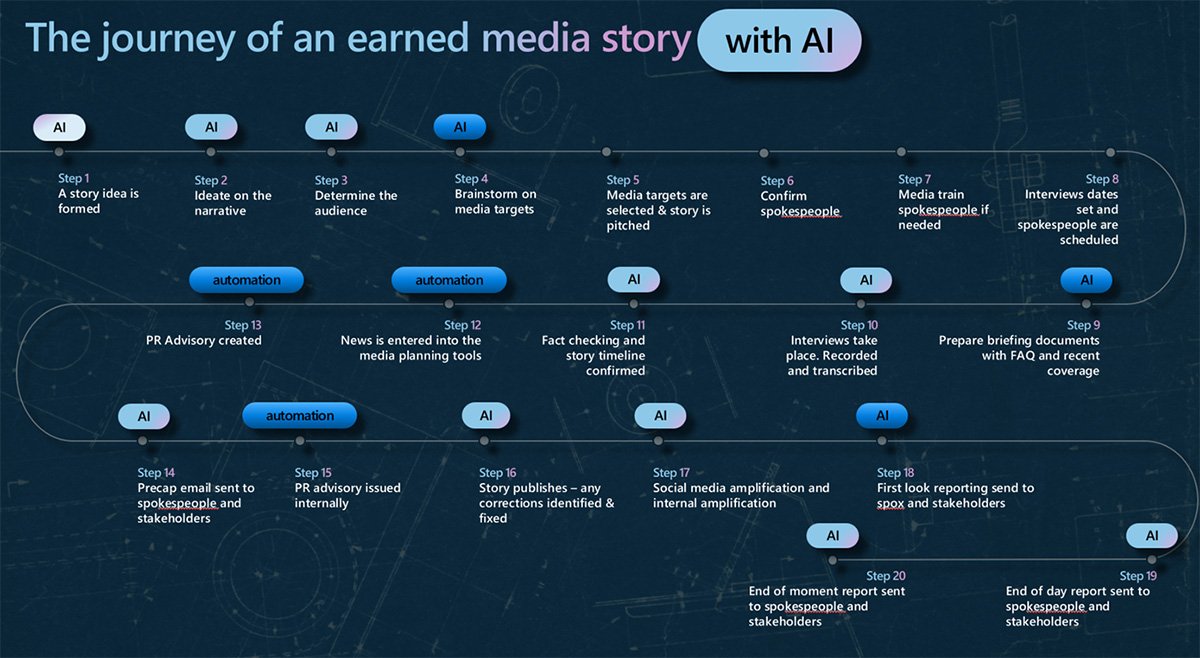November 30, 2022, will be remembered as the date of “first contact” for many of us in the field of communication. That was the day ChatGPT launched and as many of us played with the service, I suspect we had similar reactions. What have we encountered here? A species of sorts that can communicate and produce words with alarming speed and alacrity. Isn’t that our profession we asked each other? In those first few days, we both marveled at this new technology, and quietly questioned our own value and worth.
I certainly did — and when I checked the postbox outside of my house in the days following and it contained an invite to become a mail carrier for the US Postal Service, I thought perhaps this with a sign from above that my career in communications was taking an unplanned turn.
Accelerating forward by nine months, the future is far less bleak and personally I think far more exciting. My role leading communications strategy for the Microsoft communications team has us exploring the many ways generative AI can improve our profession rather than replace our profession and make our jobs more enjoyable vs. non-existent. I am genuinely excited about the prospect of an AI infused communications era. Let me explain why.
Over the last few months, we have embarked on looking at the processes within our discipline of communications and “atomizing” them – breaking them down into sub processes and then considering where we can apply AI, and how much. Let’s take the journey to an “earned media story” that lies at the heart of our discipline. At Microsoft, we broke this down into a twenty-step process as shown below. Although our process may have a few more or a few less than others, this likely looks similar for any communications team.

We then considered where we could apply AI throughout this process and to what extent. For example, at Step 1, the formation of a story idea we think a light sprinkling of AI can help with ideation. Meanwhile, at Step 4, we think there is a lot of room for AI assistance as we consider media targets. There will always be an artform to this process that considers relationships and reach, but there is also room for some science to selection — especially as the media landscape continues to fragment.
As we considered this atomization, three things stood out for us that we think are worth sharing:
- AI can be applied in many places – though it requires careful consideration on just how much. Our profession is an artform that can benefit from some science with AI – but we never want to replace art with science. AI should act as our Copilot, not an autopilot.
- Perhaps our biggest realization is the potential for automation of processes to connect disparate steps into a cohesive system that replace repetitive, drudgers with smooth flow. Steps 12, 13 and 15 are where we’re applying this at Microsoft with our own Power Automate tools.
- There are numerous steps where AI will never replace humans. We don’t plan to use AI to train spokespeople or manage our engagement and relationships with the media.
So, what to make of this “first contact”?
I am confident that mail carriers will continue to bring emotion to our doorsteps — delivering handwritten birthday cards and letters. Nothing can replace human connection and stories that move people. It’s at the core of our profession as communicators, and just as we adapted to every technology beforehand, we now have a new tool that creates new opportunities.
It’s time to experiment and to operate on the frontiers. That is what we’re doing at Microsoft, and we’re committed to sharing our journey and our learnings as we go.
Steve Clayton has more than 25 years of experience at Microsoft across technical, strategy, and storytelling roles. He leads the newly formed Microsoft Communications Strategy Team whose primary focus is to reinvent how Microsoft operates its communications business using AI.
